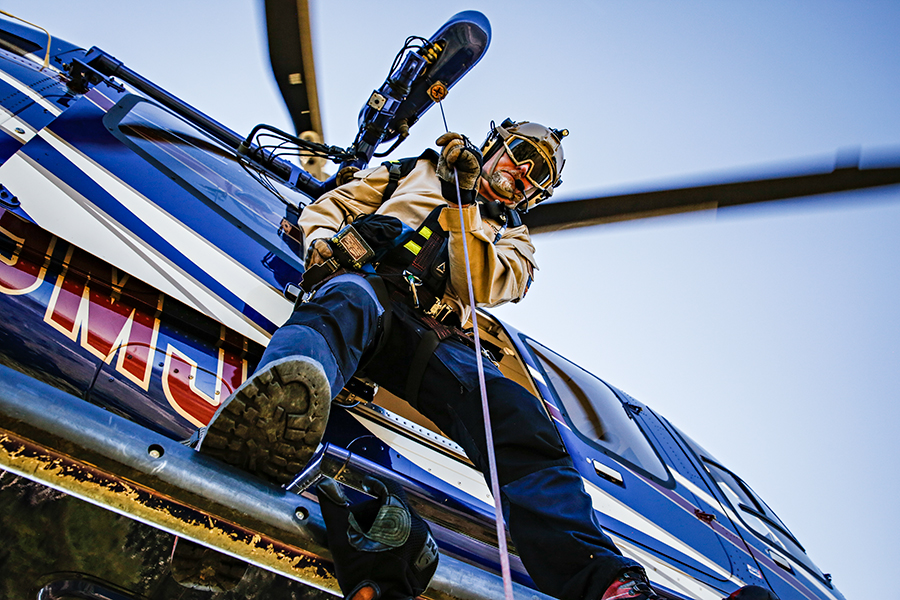Flathead Search and Rescue ‘Strapped for Resources’
The sheriff's office is responding to a high volume of calls this summer with incidents ranging from car accidents to river drownings to dehydration
By Maggie Dresser
As the Flathead’s recent explosion of new residents and visitors exceeds the valley’s capacity this summer, the Flathead County Sheriff’s Office has been dispatched to everything from fatal car accidents to boaters stranded in the river to folks who ran out of water on a hike.
Flathead County Sheriff Brian Heino says by mid-July the office already had roughly 2,000 more calls to service this year when compared to the year prior, and that number will likely continue to grow.
Law enforcement and emergency services like Flathead County Search and Rescue (SAR) resources are stretched thin. SAR is receiving an average of two to three calls a week.
“We are strapped for resources,” Heino said. “With the sheer volume of individuals visiting and recreating in the county this year we’re getting a lot of search and rescue calls. We’re seeing a lot more people recreating on rivers and lakes.”
The sheriff’s office has responded to several river incidents this summer, including a 39-year-old local man who was not wearing a life jacket and drowned in a kayaking accident on the Flathead River on July 11. There have also been drownings in neighboring Lincoln and Mineral counties, Heino said.
SAR has used its swift water rescue team on several occasions this year on the North Fork and other surrounding rivers, assisting in situations ranging from individuals stuck on the wrong side of the river to flipped boats.
“Water is always a big one for us,” Heino said. “We want to educate the public about life preservers – that’s what saves lives. That is where we see the difference between a recovery operation or a rescue operation.”
In addition to water rescues, SAR officials are seeing a lot more people venturing into the backcountry, many of whom are unprepared and in unfamiliar terrain. Areas like the Jewel Basin and the Bob Marshall Wilderness are seeing far more hikers than normal. In recent years, SAR has also received more calls to the Continental Divide Trail.
“We’re seeing more individuals trying to do the Continental Divide Trail,” Heino said. “It seems that they’re trying to do it at a fast pace and bringing limited resources. They’re carrying less safety supplies and that trail is very demanding … It hasn’t been maintained in a lot of spots and it’s a very challenging trip that involves understanding maps and terrain features.”
Glacier National Park’s ticketed entry system is likely contributing to the influx of activity in nearby national forests and wilderness areas as people get pushed outside of the park, Heino said.
As activity in the backcountry increases, Heino calls it “the new generation of SAR calls,” because many people are using SPOT satellite communication devices and transceiver units. While some of these technology devices have a texting feature, which gives users the opportunity to provide details about the incident, many of the calls have no other information and create challenges for rescuers who have no idea what scene they are about to stumble upon.
“You see everything from cardiac arrest to a femur fracture, someone falling off a trail all the way to dehydration and people that don’t know where they are,” Heino said.
While satellite communication technology has become useful in a lot of situations, Heino suspects that people are becoming reliant on it.
“I think we do see a level of comfort and safety with the new technology where before it was more limited,” Heino said. “Nowadays you just press a button.”
The high volume of calls this summer is straining both SAR and law enforcement, especially since many incidents involve multiple deputies or volunteers.
The Flathead County Sheriff’s Office is fully staffed with 63 sworn deputies, but some aren’t trained yet and a few are out due to injuries. Between North Valley SAR, which covers the northern end of the valley, and Flathead County there are between 60 and 80 volunteers, which includes specialized resources like dive teams.
As the busy summer continues, Heino would feel more comfortable with 70 to 80 deputies, but they are getting by with what they have. Some resources have been redirected and the office’s street crime and canine units are now on patrol shifts until the summer winds down.
Wildfires in Flathead County, including the Hay Creek fire west of Polebridge, are also taking up resources and the sheriff’s office issued pre-evacuation notices for 20 structures in the area as of July 23.
“Now we’re adding on fires and that takes on another set of resources,” Heino said. “Evacuations and security after evacuations – that takes a ton of resources. We’re really limited right now.
In the meantime, Heino is trying to educate the public and emphasizes how simple precautions can reduce the need for emergency services.
“Having those safety measures in place like knowing where you’re going and having tools like life jackets and throw bags … All of those types of things dramatically help us and I think that’s where we all need to start,” Heino said. “Nobody goes out to make an error or have an injury, it’s just sometimes taking those two extra steps.”